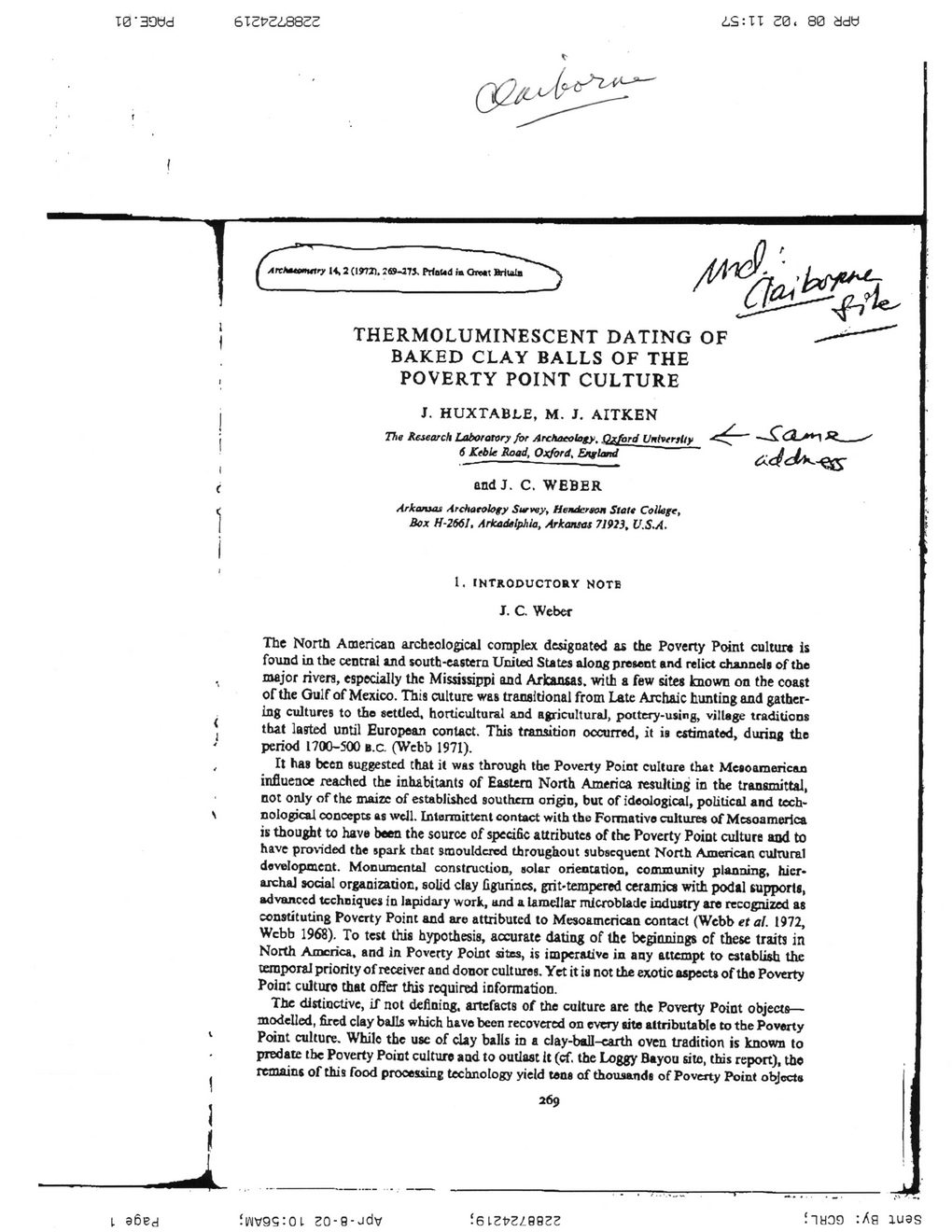This text was obtained via automated optical character recognition.
It has not been edited and may therefore contain several errors.
THERMOLUMINESCENT DATING OF BAKED CLAY BALLS OF THE POVERTY POINT CULTURE J. HUXTABLE, M. J. AITKEN The Research Laboratory for Archaeology, Oxford UntvtnUv 6 Keble Road, Oxford, England end J. C. WEBER Arkamas Archaeology Survey, Hemdcrmn Slat* College, Box H-266I, Arkadelphla, Arkansas 71923, U.S.A. 1. INTRODUCTORY NOTE J. C. Weber The North American archeological complex designated as Che Poverty Point cultur« is found in the central and south-eastern United States along present and relict channels of the major rivers, especially the Mississippi and Arkansas, with a few sites known on the coast of the Gulf of Mexico. This culture was transitional from Late Archaic hunting and gathering cultures to the settled, horticultural and agricultural, pottery-using, village traditions that lasted until European contact. This transition occurred, it is estimated, during the period 1700-500 B.C. (Webb 1971). It has been suggested chat it was through the Poverty Point culture that Mesoamerican influence reached the inhabitants of Eastern North America resulting in the transmittal, not only of the maize of established southern origin, but of ideological, political and technological concepts as well. Intermittent contact with the Formative cultures of Mesoamerlca is thought to have been the source of specific attributes of the Poverty Point culture and to have provided the spark that smouldered throughout subsequent North American cultural development. Monumental construction, solar orientation, community planning, hicr-archaJ social organization, solid clay figurines. grit-tempered ceramics with podtl supports, advanced techniques in lapidary work, and a lamellar microblade industry are recognized as constituting Poverty Point and are attributed to Mesoamerican contact (Webb et al. 1972, Webb 1968). To test this hypothesis, accurate dating of the beginnings of these traits in North Amcrica. and in Poverty Point sites, is imperative in any attempt to establish the temporal priority of receiver and donor cultures. Yet it is not the exotic aspects of the Poverty Point culture that offer this required information. The distinctive, if not defining, artefacts of the culture are the Poverty Point objects— modelled, fired clay balls which have been recovered on every site attributable to the Poverty Point culture. While the use of clay balls in a clay-ball-earth oven tradition is known to predate the Poverty Point culture and to outlast it (cf. the Loggy Bayou site, this report), the remains of this food processing technology yield tens of thousands of Poverty Point objects 269 J tAIV9S:0l 20-9- Jdv !6 LZPZ199ZZ ! "IH39 :^9 1U9S

Claiborne Historical Site Archaeometry-Pp-269-275-(01)